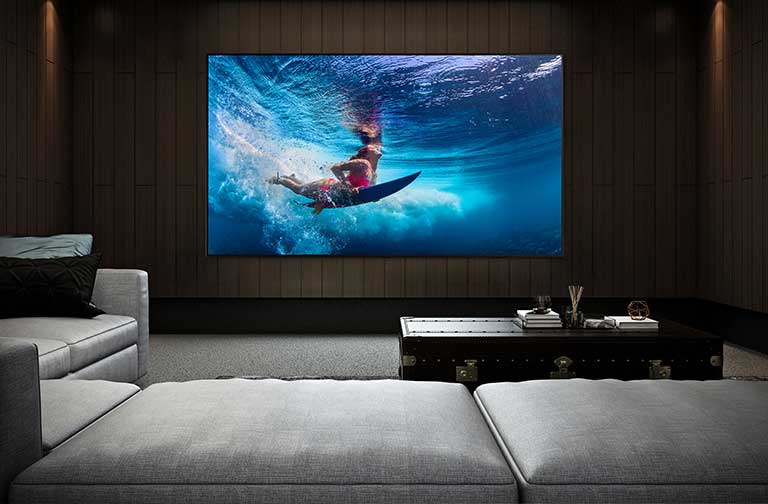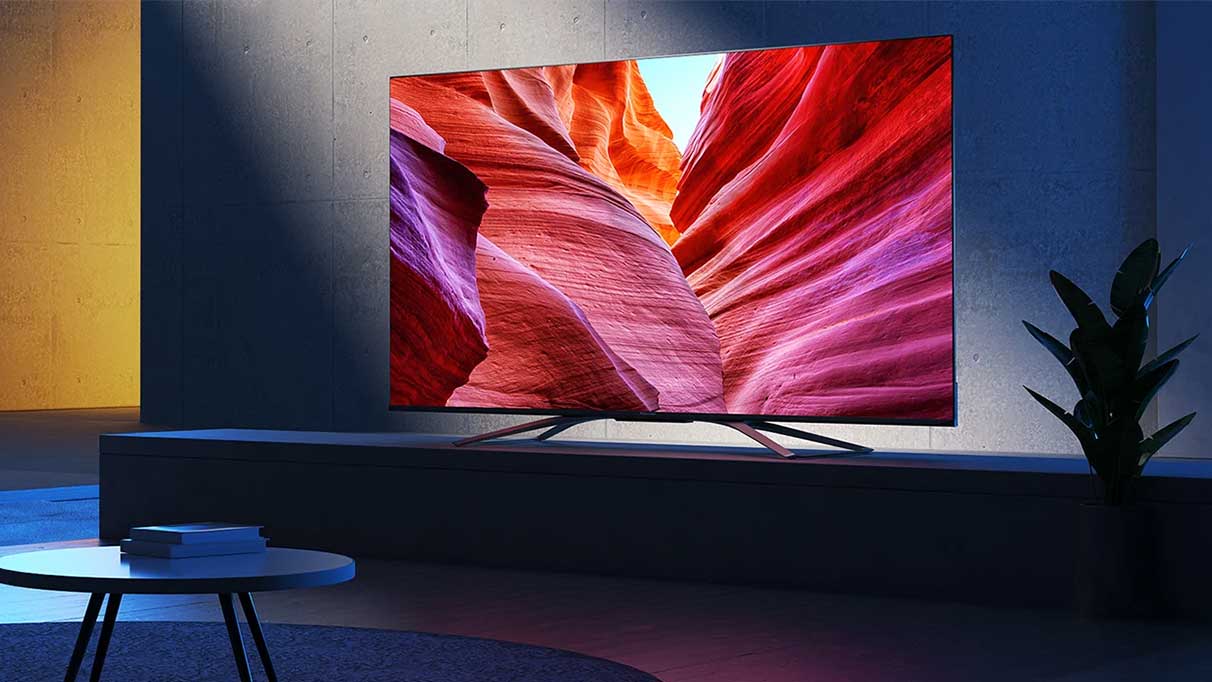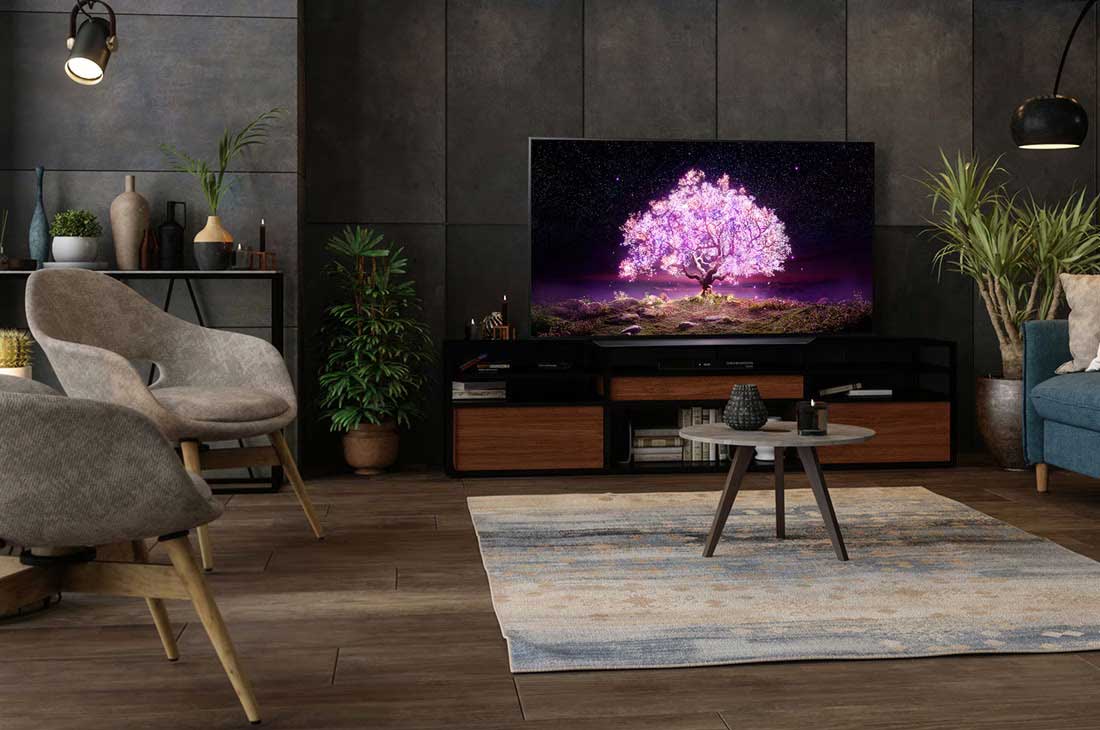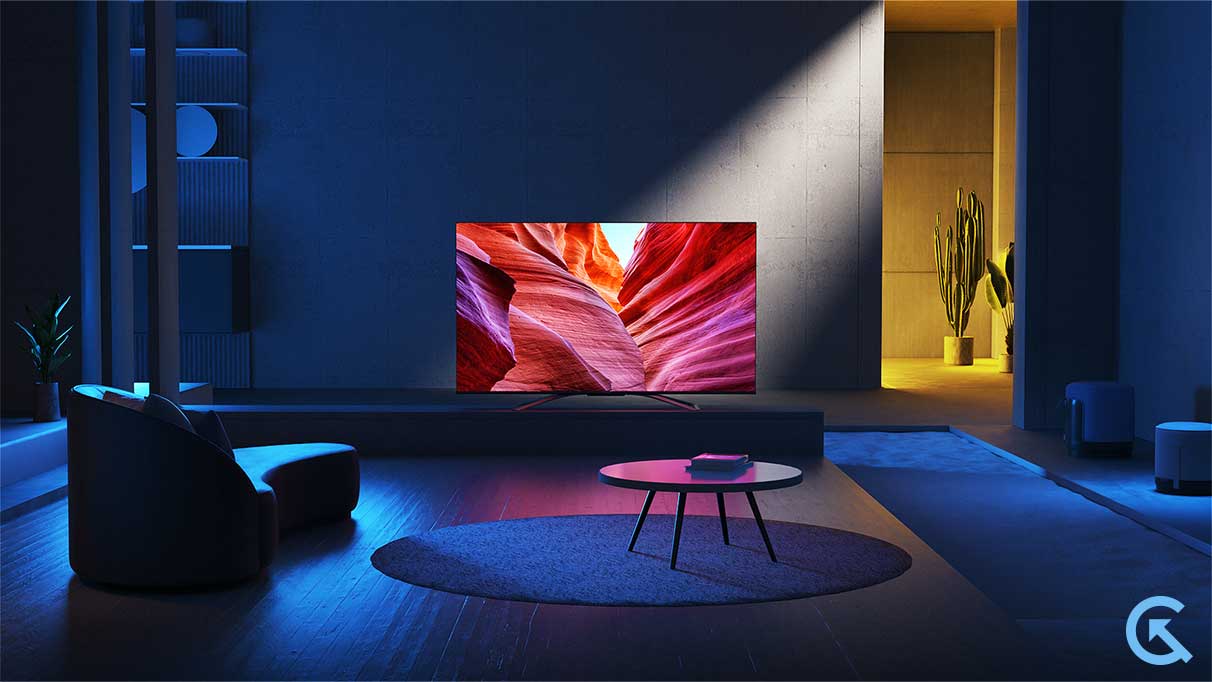Choosing a TV can be complex, with many different brands, models, and features to consider. Two popular options are the Hisense U8G and the LG C1, which use very different panel technologies, each with strengths and weaknesses. So which one is better? In this article, we’ll compare the two TVs and help you decide which is better for you.
Also Read

Page Contents
Specs, Design and Features
The Hisense U8G comes in three screen sizes (55”, 65”, 75”), while the LG C1 comes in five (48”, 55”, 65”, 77”, 83”). The Hisense model has a refresh rate of 120Hz and a response time of 4ms, while the LG C1 has a maximum refresh rate of 120Hz and a response time of 1ms, which is ideal for gaming. Both models have HDMI 2.1 ports, allowing for high-speed data transfer and smooth gaming experiences. The Hisense U8G has two HDMI 2.1 ports and two USB ports, while the LG C1 has four HDMI 2.1 ports and three USB ports.

The Hisense U8G has a slim bezel and a silver border at the bottom of the screen. It has a slim, high-quality silver stand that can be adjusted to fit the width of your desktop for mounting position.
The LG C1 has a more unique stand that takes up more space and requires a wider table for placement. The stand is low, so it is unsuitable for placing a soundbar in front. The Hisense U8G has a plastic back, while the LG C1 has the top half of the back made of metal and the bottom half plastic. The C1 is thinner than the U8G and more suitable for wall-mounted installation.
The LG C1 has a smart TV platform that supports LG’s own webOS 6.0 operating system. It offers popular streaming apps like Netflix, Amazon Prime Video, and Disney+. The Hisense U8G has the Google TV operating system and the Google Play Store, which offers a wide range of apps.
GoogleTV vs. webOS
Google TV and webOS are popular smart TV operating systems that offer different features and apps. Google TV has a new user interface and integrates with Google Assistant and Chromecast, making it suitable for those invested in the Google ecosystem.
On the other hand, webOS has a simple and intuitive user interface and supports LG ThinQ voice assistant, making it a better option for those already using LG smart home devices. Both platforms offer customization options and a wide range of apps. The choice between the two depends on your personal preference and specific needs.
Picture Quality
The LG C1 uses an OLED panel with a perfect contrast ratio and excellent blacks. Although the Hisense U8G has an excellent contrast ratio, it is not as deep as C1’s black; its deep black and highlight performance are considered excellent among LED TVs.

The U8G presents some vignetting in some scenes, but the C1’s dimming function is nearly perfect, with almost no vignetting of highlights in dark scenes. The Hisense U8G Mini-LED does its best in SDR and HDR, with excellent peak brightness. The LG C1 does OK in HDR and SDR but is not as bright as the U8G.
Viewing Angles
The LG C1 OLED viewing angle is excellent, making it ideal for families who like to watch shows or sporting events with friends or family. The OLED panel ensures a wide viewing angle, so you can see an accurate image even when sitting farther to the side from the centre. The Hisense U8G offers a relatively small viewing angle, so you must sit in the TV’s centre to get a high-quality image.
Sound Quality
The LG C1 has a 2.2 channel system with 40W output, while the Hisense U8G has a 2.1 channel system with 20W output. Both models have decent sound quality, but if you want a more immersive audio experience, you may want to consider investing in a soundbar or a home theatre system.
Gaming
Another important factor to consider when choosing between the Hisense U8G and the LG C1 is gaming performance. Both TVs are great for gaming, but there are some differences to keep in mind.
The LG C1 has a low input lag and supports HDMI 2.1, making it a great choice for the latest gaming consoles like the Xbox Series X and PlayStation 5. It also has variable refresh rate (VRR) support and can display 4K at a 120Hz refresh rate (1 ms response time), which is ideal for fast-paced games.
On the other hand, the Hisense U8G also has a low input lag and supports VRR. It can also display 4K at a 120Hz refresh rate, but it has a lower response time than the LG C1, which is 4ms.
Movies and TV Shows
Both the LG C1 OLED and Hisense U8G TVs are great options for watching movies and TV shows. The LG C1 OLED produces deep blacks and upscales lower-resolution content well, making it perfect for watching movies in a dark room. It also has wide viewing angles and great reflection handling, ideal for watching TV shows in a bright room. However, its fast response time may cause stuttering during slow panning shots.
On the other hand, the Hisense U8G TV has an impressive contrast ratio and black uniformity, delivering an excellent movie-watching experience in a dark room. It also has great reflection handling and high peak brightness, making it perfect for watching TV shows during the day. However, its image degrades when viewed at an angle, and there may be some stuttering during movies.
Which One is Better?
After considering TV’s strengths and weaknesses, the final decision depends on your preferences and viewing habits. If you prioritize picture quality, contrast ratio, viewing angles, and gaming performance, the LG C1 is an excellent choice. However, if you want a brighter display for a bright room and don’t care about the narrow viewing angle, the Hisense U8G would be a better option. Ultimately, deciding which TV is the best fit for your home entertainment setup is up to you.
Also Read
